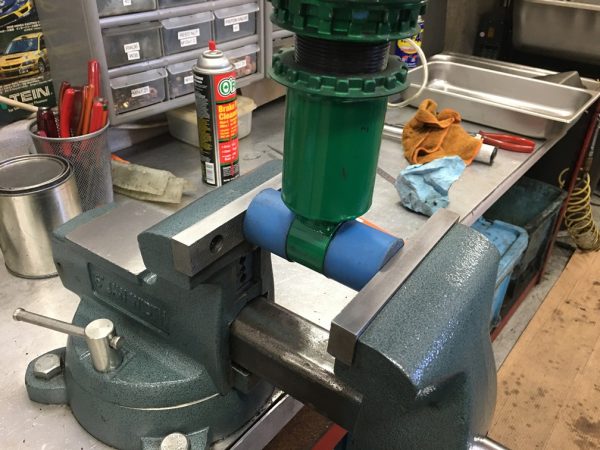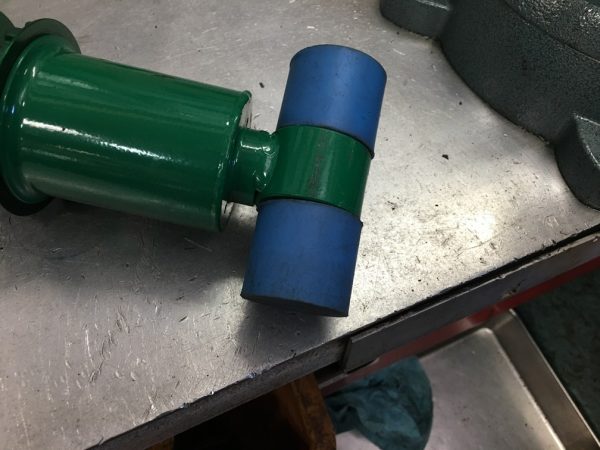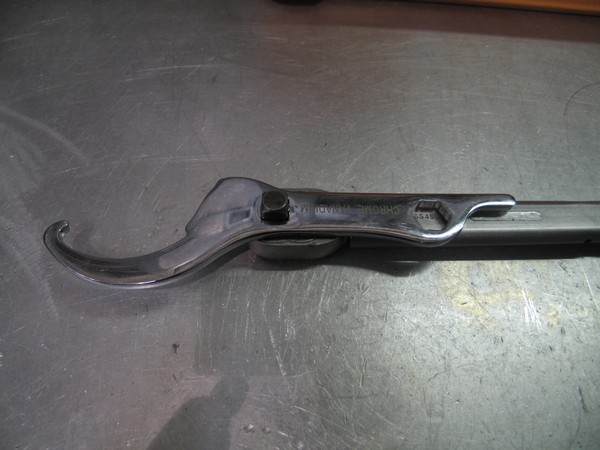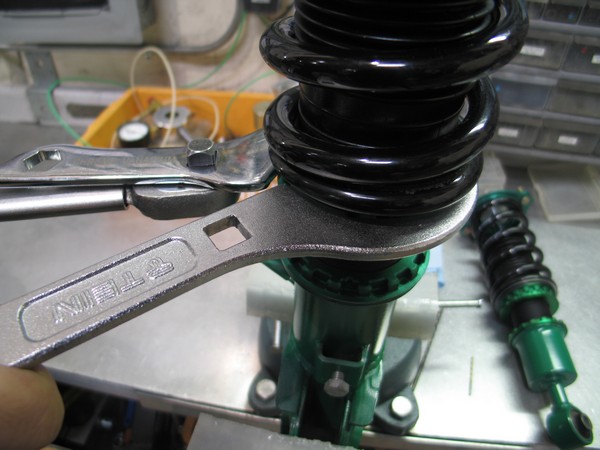It seems that lately we have been receiving many questions in regards to how to torque our damper components, and what to torque them to.
This time around we’ll be covering the proper method of torquing the Lower Bracket Lock and Seat Locks.
The use of a table mounted vice and plastic soft jaws is highly recommended.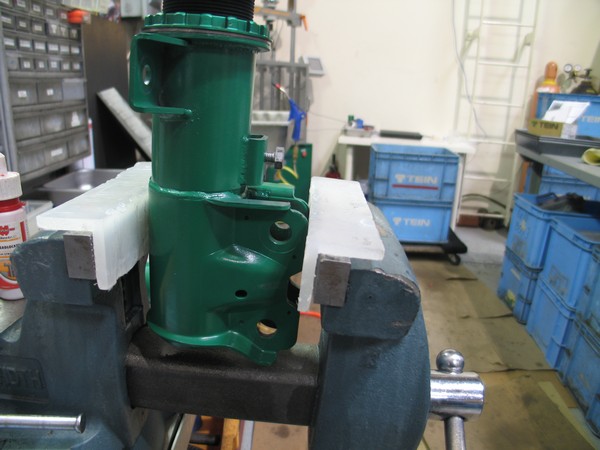
As you can see above, for Eye Ring type bushings, we have special plastic caps with magnets that sit on the inner sleeve of the bushing and protects the outer ring. This allows us to clamp this type of lower bracket to the vise.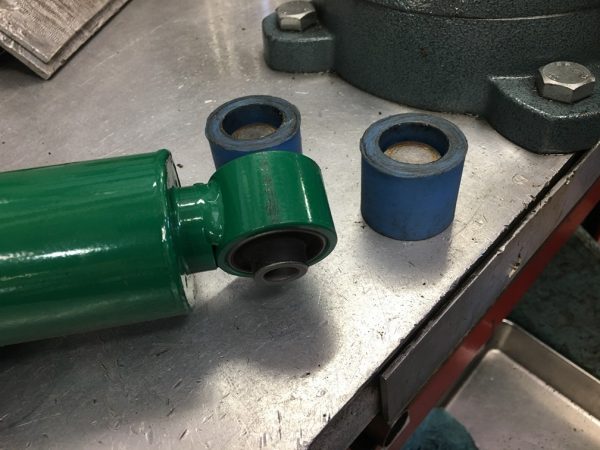
We can also secure Fork type lower brackets onto the vise, like below: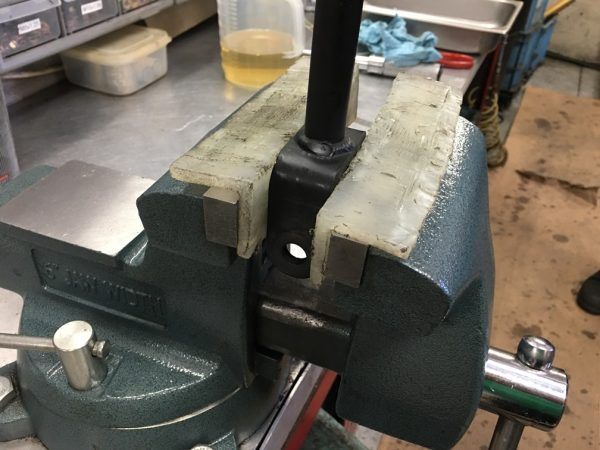 However, DO NOT clamp Fork type lower brackets like below:
However, DO NOT clamp Fork type lower brackets like below: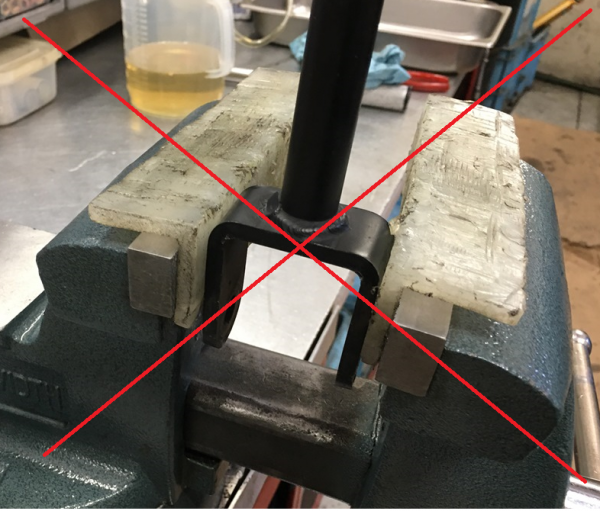 This can cause damage to the Fork, if improperly secured in this way.
This can cause damage to the Fork, if improperly secured in this way.
Remember not to overtighten the vice, otherwise you will end up with some bent and possibly broken parts. The vice only needs to be tightened to the point that the damper will not move around while torquing the parts down.
We will also need the necessary tools to torque the various locks on the damper.
You will need:
1 Pair of TEIN ADJ Wrenches
&
1 Half-Inch Torque Wrench
As you can see here our ADJ Wrenches come with a square hole that is made to snap into a Half-Inch Torque Wrench: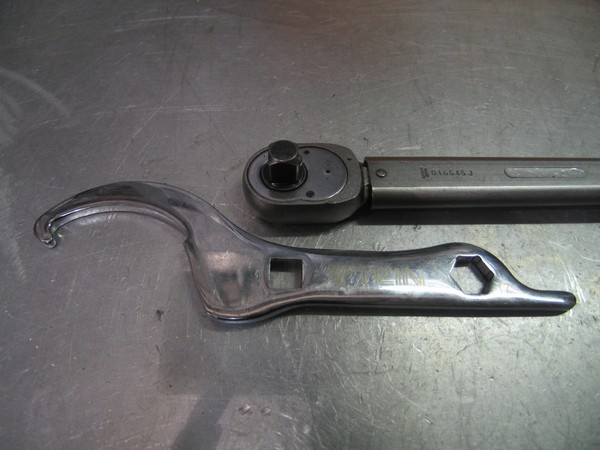
Now that we have the damper mounted and the tools for the job setup we can move along to the actual torquing.
We’ll start off with Seat Locks that do the job of holding the spring up.
The torque for the Seat Locks is roughly the same for any and all TEIN Dampers, ranging from Basic Dampers to the Super Racing Dampers, or even the newer STREET BASIS Z/STREET ADVANCE Z and FLEX Z kits.
The torque spec for the Seat Locks is 41.7 +/- 1.8 ft-lb.
(*Please check your included coilover manual for actual torque specifications for your vehicle application)
After setting the spring height to where you want it to be, take the spare ADJ Wrench that isn’t hooked up to the Torque Wrench and hold the top Seat Lock, then with the Torque Wrench set to the proper torque setting tighten the bottom Seat Lock until you hear/feel the Torque Wrench click.
Simple enough.
Now, for those with full length adjustable dampers (e.g. FLEX/FLEX Z, MONO FLEX/MONO SPORT, SUPER RACING, etc.) you will also need to torque down the Seat Lock that holds the Lower Bracket in place.
The torque for the Lower Bracket Seat Lock differs between Strut and SA (Non-Strut) Dampers.
The torque spec for Strut Types range is from 101.2 to 115.7 (+/- 3.6) ft-lb.
The torque spec for SA Types is 50.7 +/- 1.8 ft-lb.
(*Please check your included coilover manual for actual torque specifications for your vehicle application)
Using only the ADJ Wrench and Torque Wrench combination is necessary for this Seat Lock.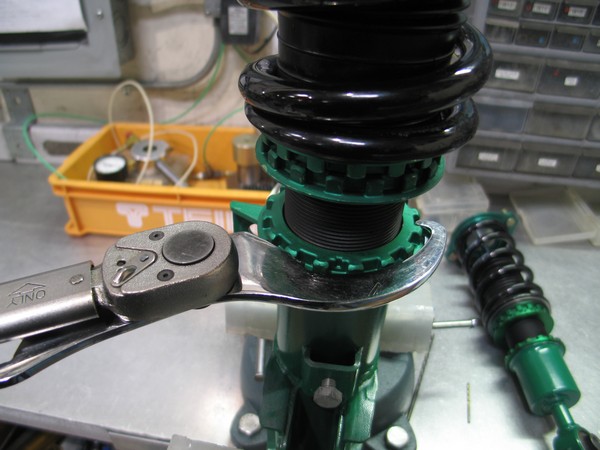
For those that do not have a vice readily available, the next best way to torque down the Lower Bracket Lock is after the Dampers have been installed onto the vehicle.
Make sure all of the other bolts and nuts (e.g. Knuckle Bolts, Sway Bar Links, etc.) are torqued to manufacturer specs.
Turn the wheel so you have clear access to the Bracket Lock and no obstructions for the proper use of a Torque Wrench, then make sure to lock the steering wheel so that the Damper will not turn while being torqued.
Next time we will talk about the proper method and specs for torquing Top Nuts, Camber Plate Hex Bolts, and HAS (Height Adjustment System) Seat Locks.

